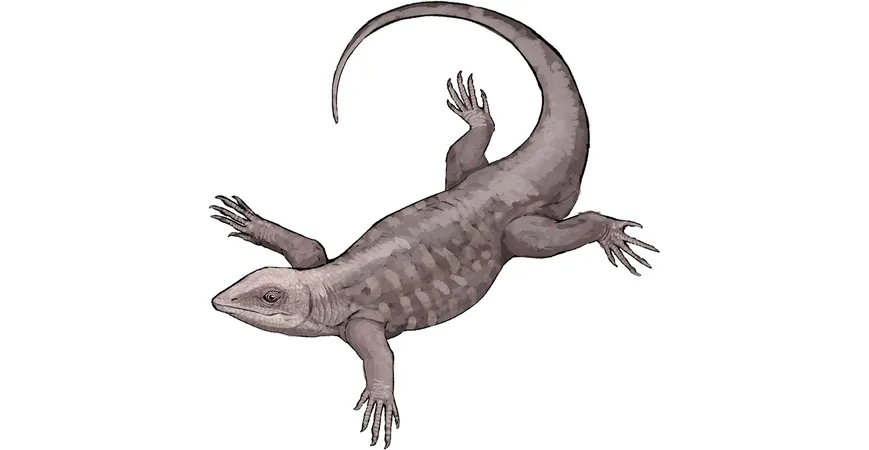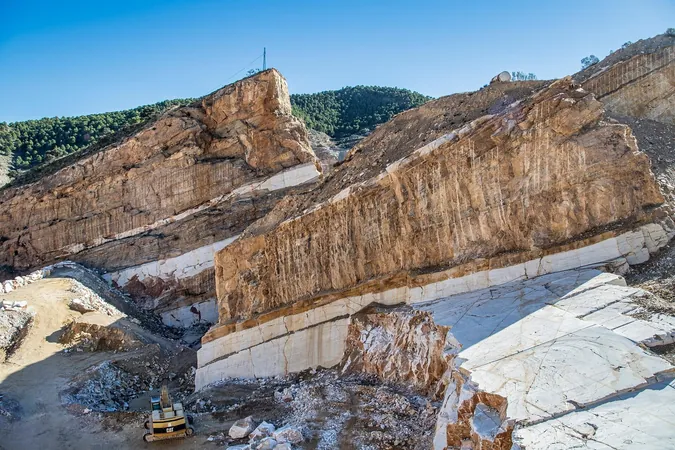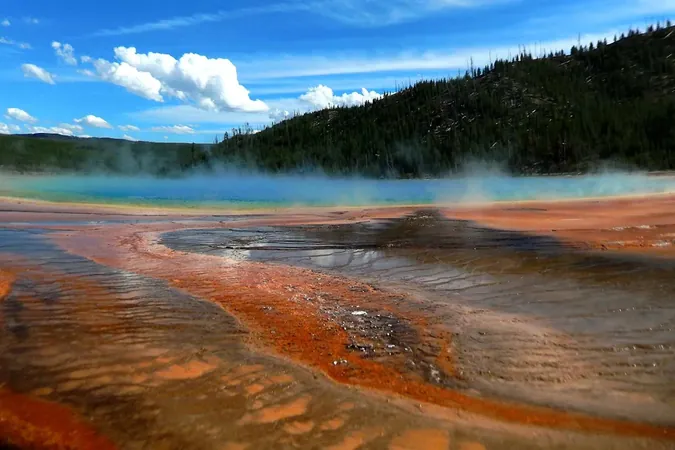
New Research on Earth's First Continental Crust Challenges Long-Standing Geological Theories
2025-04-07
Author: Emily
A groundbreaking study has transformed our understanding of Earth's early geological history, revealing that the planet's first crust, formed around 4.5 billion years ago, already possessed chemical characteristics strikingly similar to those seen in today’s continental crust.
This astonishing discovery calls into question the widely accepted belief that the defining features of modern continental crust only emerged with the advent of full-scale plate tectonics. The research, led by Professor Simon Turner from Macquarie University, indicates that these distinctive 'fingerprints' were present much earlier than previously thought, urging scientists to reconsider when and how the planet's first stable landmasses came into existence.
Chemical Traits of Early Crust
For decades, geological theory posited that subduction zones, where tectonic plates slide beneath one another, were crucial for creating the low-niobium anomaly unique to continental rocks. However, Turner's team discovered that these chemical markers could be accounted for by processes that predate the onset of plate tectonics.
“We’ve always assumed that tectonic activity was necessary for the chemical fingerprints we see in continental crust today,” Turner explained. “Our findings indicate that these signatures were already present in the earliest crust, prompting a significant reevaluation of current theories.”
Niobium's Role in Early Earth
A key factor in this research is how niobium, a metal, behaved during the formative years of Earth, likely functioning as a siderophile element—one that prefers to bond with metal. During the Hadean eon, when the planet was enveloped in a molten ocean, conditions favored the sinking of niobium into the newly forming core. This phenomenon may explain the earliest crust's low-niobium signature, linking early core formation with the chemical characteristics of modern continents without relying on subduction processes.
Turner remarked, “The connection between early core formation and the distinctive chemical traits observed in continental crust challenges our understanding of initial geological processes.”
The Impact of Meteor Strikes
The implications of this research are profound. Before plate tectonics truly kicked in, Earth's infant crust was already rich in the chemical traits thought to result from subduction-related recycling. With the aid of mathematical modeling, the researchers were able to demonstrate how the protocrust might have naturally acquired properties akin to contemporary continental rocks due to various geological activities.
One notable aspect of their findings is the significant role meteoric bombardment played during the Hadean eon, when Earth frequently faced impacts from comets and asteroids. These cataclysmic events not only shaped the crust but also might have initiated localized and sporadic tectonic-like actions.
As Earth transitioned around 3.8 billion years ago into a less chaotic state—with fewer meteoric impacts—plate tectonics may have begun operating in a more consistent manner, leading to the development of the global network of colliding and diverging plates we recognize today.
A Shift in Geological Timelines
These revelations position Earth's earliest stable crustal fragments not merely as remnants of oceanic formations, but rather as complex structures that had already incorporated key chemical signatures typical of continental rocks. This revised understanding reframes how geologists pinpoint the origins of plate tectonics, suggesting that the emergence of low-niobium rocks doesn't necessarily correlate directly with the age of subduction zones, since these anomalies likely appeared much earlier.
In a bigger cosmic picture, the implications of this research may extend to how scientists comprehend continent formation on other rocky planets. If Earth was capable of developing core chemical traits in its crust so early, this process might similarly unfold on other planets under comparable conditions.
Future Directions in Research
Looking toward the future, the researchers intend to refine their models and seek more geological evidence to support or contest this emerging narrative. Due to the rarity of rocks from the Hadean eon—many of which have been melted or altered by subsequent geological activities—finding direct evidence is a formidable challenge.
However, certain ancient minerals, such as zircons, have survived the eons, offering potential insights into this critical period of Earth's history. By redefining the timeline for continental crust emergence, this study sets the stage for a more intricate understanding of how Earth evolved into a life-sustaining planet and how similar processes might occur elsewhere in the universe.
The findings of this research are detailed in the journal Nature.









 Brasil (PT)
Brasil (PT)
 Canada (EN)
Canada (EN)
 Chile (ES)
Chile (ES)
 Česko (CS)
Česko (CS)
 대한민국 (KO)
대한민국 (KO)
 España (ES)
España (ES)
 France (FR)
France (FR)
 Hong Kong (EN)
Hong Kong (EN)
 Italia (IT)
Italia (IT)
 日本 (JA)
日本 (JA)
 Magyarország (HU)
Magyarország (HU)
 Norge (NO)
Norge (NO)
 Polska (PL)
Polska (PL)
 Schweiz (DE)
Schweiz (DE)
 Singapore (EN)
Singapore (EN)
 Sverige (SV)
Sverige (SV)
 Suomi (FI)
Suomi (FI)
 Türkiye (TR)
Türkiye (TR)
 الإمارات العربية المتحدة (AR)
الإمارات العربية المتحدة (AR)